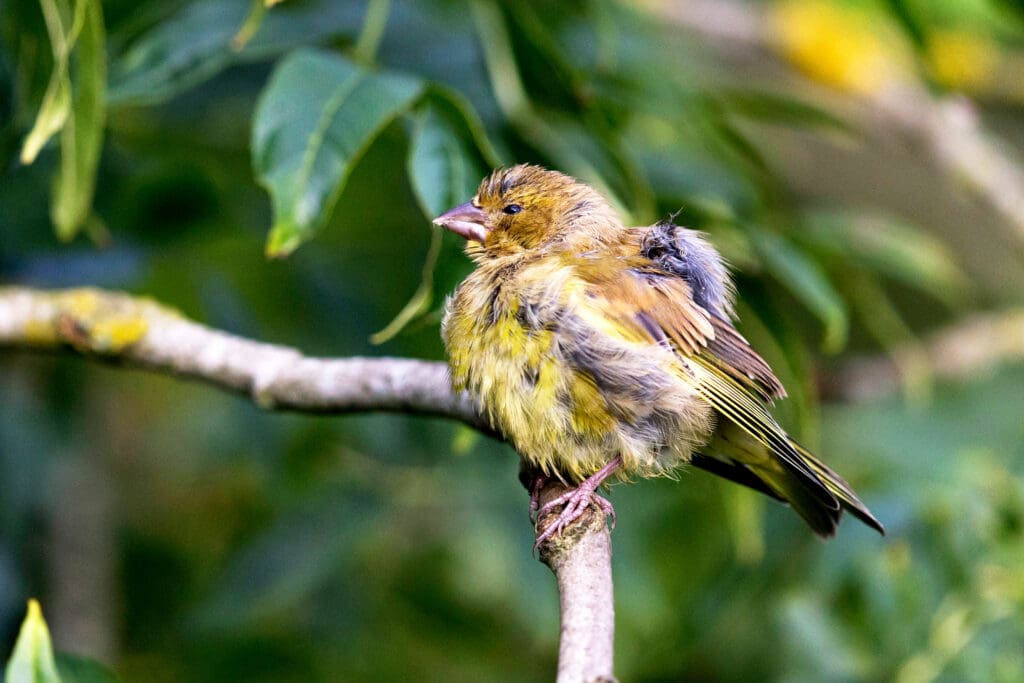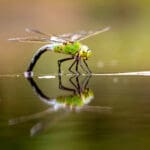I have seen Common Frogs with blisters on their skin. What is this and can toads get it?
Joanne Winn
Such unusual-looking changes on Common Frogs’ skin are typically caused by a ranid herpesvirus. They appear during the breeding season, but affected frogs usually recover over time.
In Common Toads, a skin disease caused by a different virus in the same group, called bufonid herpesvirus, has been reported in Switzerland and Germany, sometimes leading to thickened brown-to-orange patches of skin.
Wildlife vets from Garden Wildlife Health say: “We recently diagnosed bufonid herpesvirus skin disease in a small number of Common Toads at one location in England, but we suspect the condition may be more widespread. We need to learn more about where it occurs in Great Britain and whether it can cause ill health in Common Toads.”
Please report any sightings of ill health in amphibians, ideally with a photo, to the Garden Wildlife Health project.
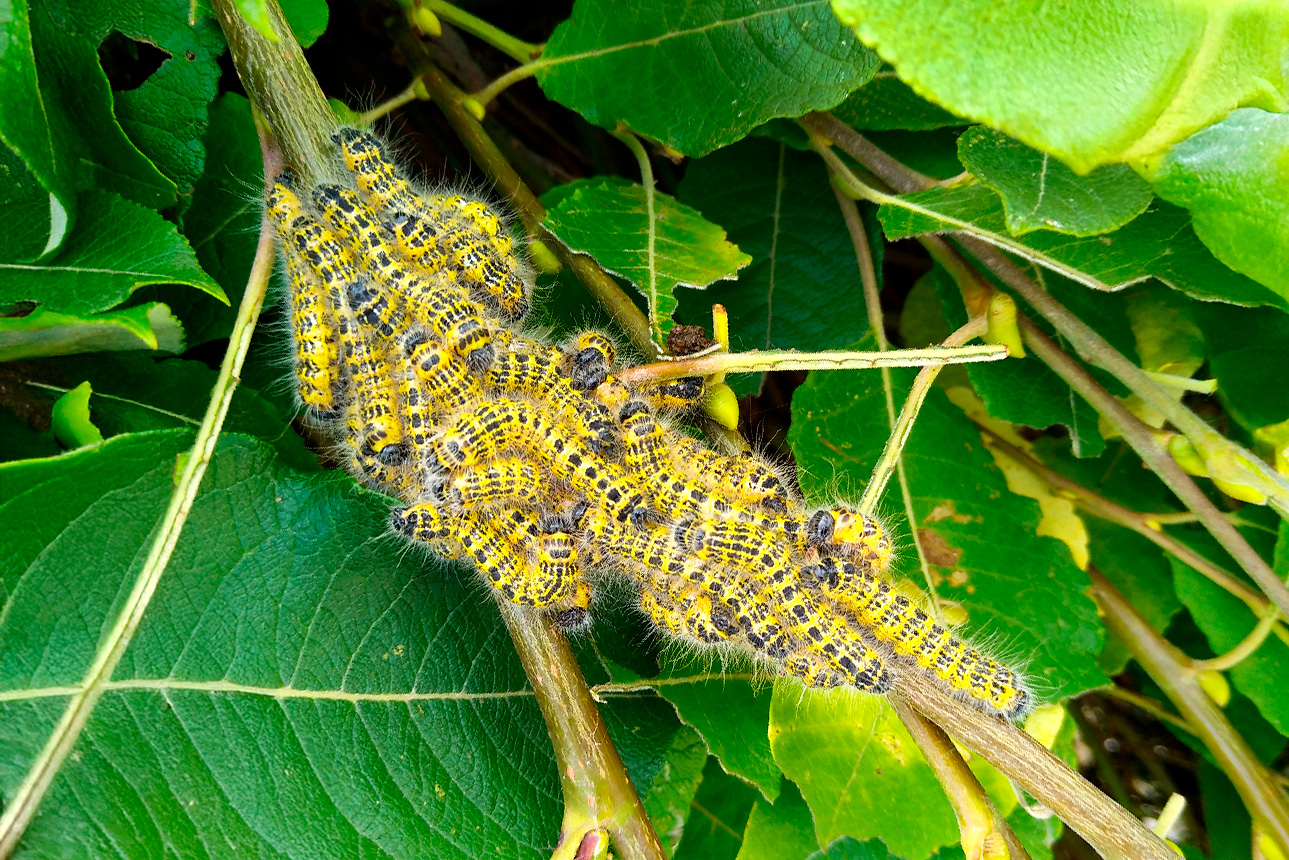
Buff-tip caterpillars on a willow tree. Photo: Alison Rice
What species are these caterpillars?
Alison Rice
This photo shows a group of Buff-tip caterpillars on a willow tree and is a brilliant spot! These caterpillars often group together and are seen from July to early October and then overwinter as pupae under the ground.
The adult moths that emerge are incredible at camouflage. When resting, they hold their wings against their bodies and mimic the appearance of birch bark.
Here’s a guide to identifying moths such as the Buff-tip.

House Martin, Swallow and Swift. Illustration: Mike Langman (rspb-images.com)
House Martin, Swift or Swallow?
These wonderful summer visitors travel all the way from Africa and are often a welcome sign that spring has officially arrived. These migrants are usually seen darting and swooping as they hunt for their food – flying insects. However, they can be tricky to distinguish.
House Martin
- Glossy blue-black upperparts with an obvious square white rump
- White throat and underside
- Short, forked tail
- Often builds mud nest cups below eaves of houses
Swallow
- Glossy blue-black topside and head
- Red forehead and throat
- Scythe-shaped wings
- Long tail streamers
- Seen gliding low to the ground and perching on telegraph wires
Swift
- Dark soot-brown all over
- Small, pale-brown patch on throat
- Wide, crescent-shaped wings
- Short, forked tail
- Larger wingspan
- Often flying at great heights and ‘screaming’
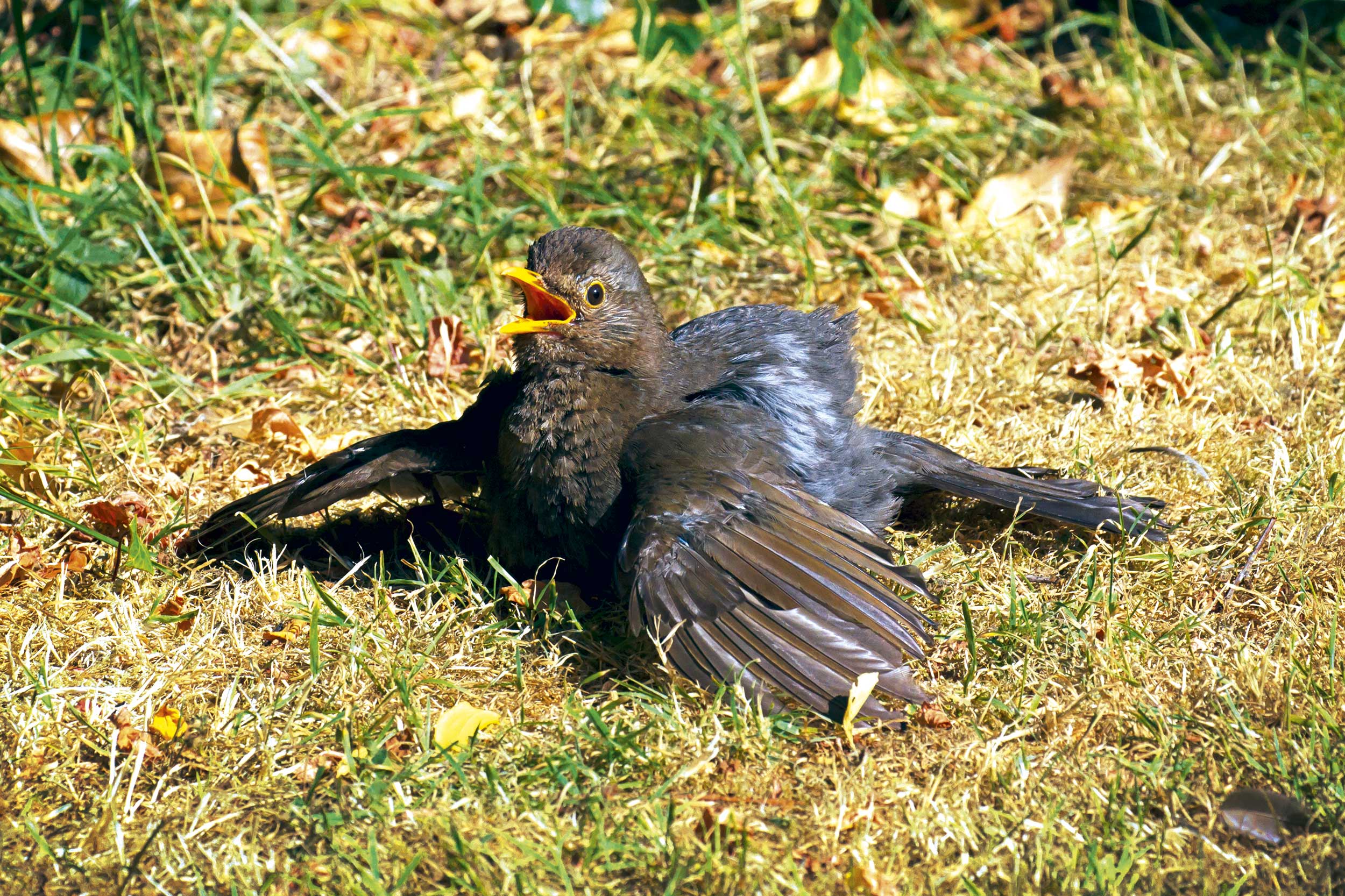
Blackbird. Photo: Roger Tidman (rspb-images.com)
Why do Blackbirds sit in grass with their wings spread out?
Will Burnett
While we might typically think of birds cleaning themselves with water from a bird bath, birds have several different strategies for keeping clean.
Some birds also ‘sunbathe’ by fluffing up their feathers and spreading out their wings in a sunny spot. This is thought to make it easier for them to remove parasites and to help the preen oil spread out across the feathers.
Another interesting behaviour that has been seen in some species (including Blackbirds) is ‘anting’. This is where birds actively place ants, or passively allow them to climb, onto their plumage. They may do this to help get rid of parasites.

Puffin. Photo: PBAGCY Nature Picture Library (Alamy Stock Photo)
When is a good time to see Puffins in the UK?
Drew Williams
Puffins spend most of their time out at sea, but they can be seen during the summer when they move to coastal cliffs to nest.
They usually return to their nesting colonies in March and April, and the best time to see them is typically between May and July.
Puffins nest in burrows (which they excavate themselves or sometimes even commandeer from Rabbits) situated in turf or in crevices between rocks on grassy clifftops.
The RSPB has several nature reserves where Puffins can be found including RSPB Bempton Cliffs in England, Rathlin Island in Northern Ireland, RSPB Sumburgh Head in Scotland and RSPB South Stack in Wales. Just be sure to keep your distance when observing Puffins and don’t bring dogs near nesting seabirds. See if you can spot some sandeels in a Puffin’s colourful bill!
Read about the importance of sandeels as a food source for Puffins.
How to…
Choose the best plants for your wildlife pond
Plants are essential for any pond. They help keep the water clear and oxygenated, provide food and habitat for pond inhabitants and are wonderful to look at.
However, there are some key things to remember when selecting vegetation for your pond. You should choose a mixture of submerged (for example, the Hornwort or Ceratophyllum family), floating (for example, Frogbit or Hydrocharis morsus-ranae in England, Common Water-crowfoot or Ranunculus aquatilis, etc) and marginal plants (for example, Marsh Marigold or Caltha palustris, Water Mint or Mentha aquatica, etc).
Never source plants from the wild and be very careful indeed if using gifts from friends’ ponds. If you do receive plants from a friend, make absolutely sure that their pond contains no Invasive Non-native plants. If in doubt, do not use them! And only buy aquatic plants from a reputable supplier of native British pond plants.
Make sure to choose plants that are suitable for the size of your pond, as some can quickly grow too large and overtake the entire pond.

Common Frog tadpole with Hornwort, or Certophyllum. Photo: Jack Perks (rspb-images.com)
You might also like
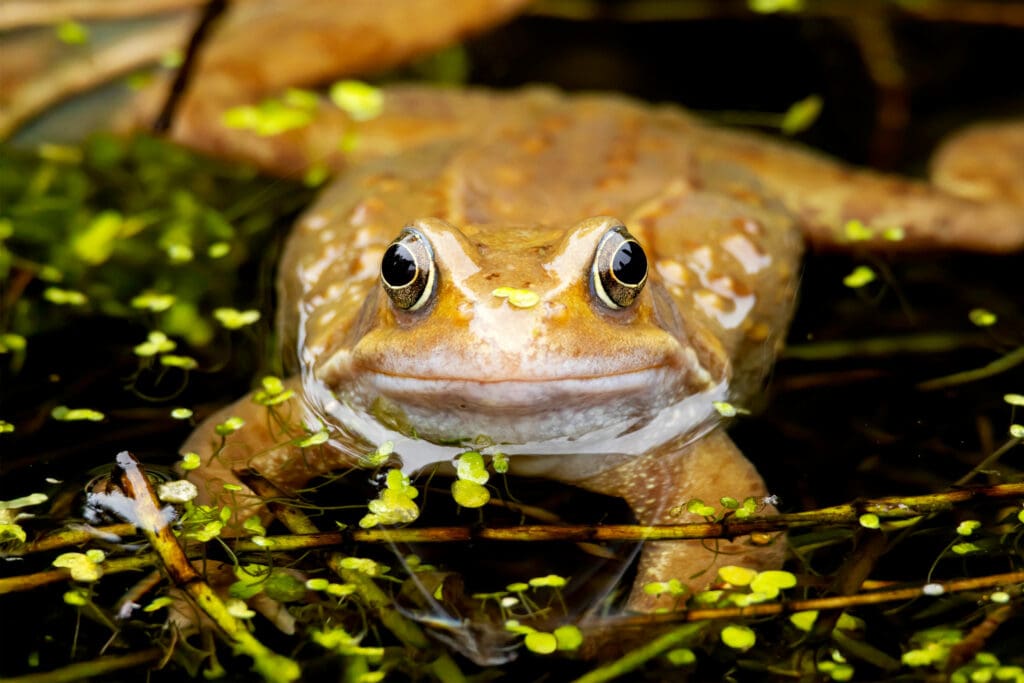
Your questions – Winter/Spring 2025
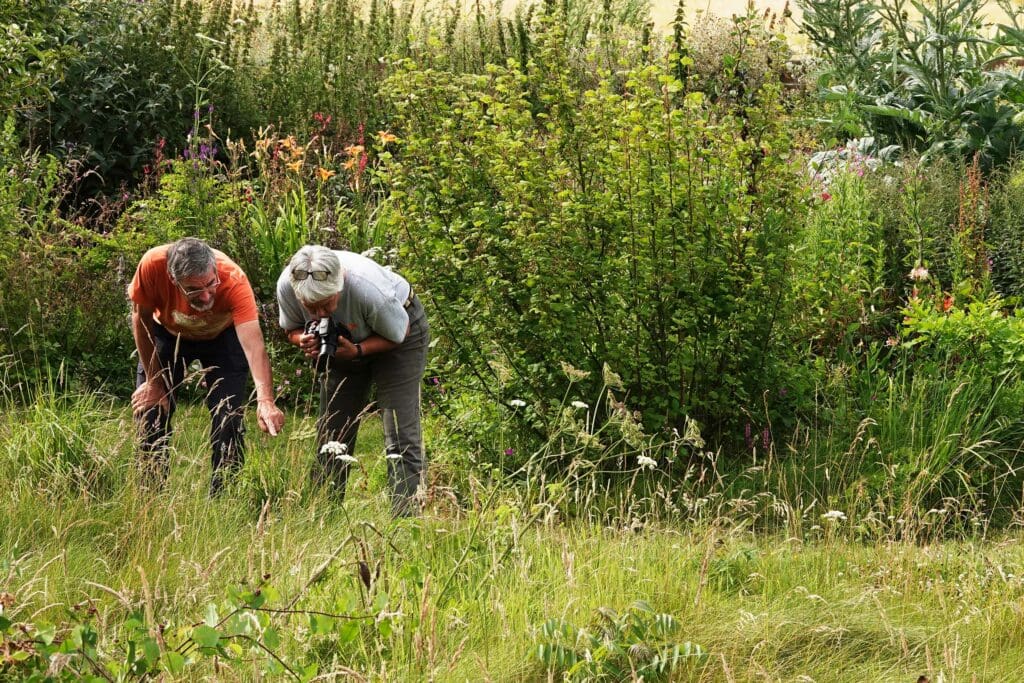
Observing and recording wildlife in a Norfolk garden
